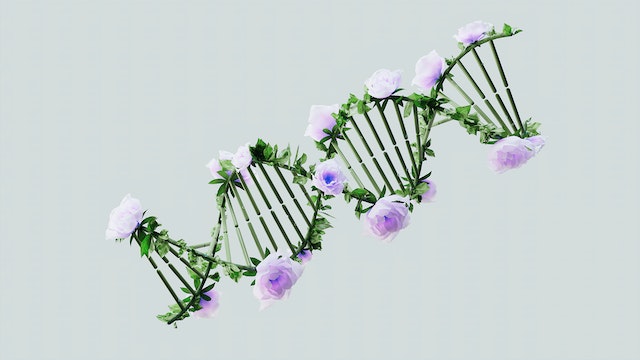
What is CRISPR? It is a way of editing genes and it stands for Clustered Regularly Interspaced Short Palindromic Repeats. It works by separating the genes inside the DNA and inserting a mutation.
To begin with, let’s look at what DNA and genes are. DNA is inside all of our cells and it holds the genetic code that makes us what we are. We began as one single cell with DNA and that DNA has been copied trillions of times. We have roughly 30 trillion cells in our bodies and they die and are remade all through our lives. The original DNA is probably copied hundreds of trillion times throughout our lives. So, what is DNA? It stands for Deoxyribonucleic Acid and it is the instructions that our cells use when they copy themselves. It is made up of chemical building blocks called nucleotides. A nucleotide has a phosphate, a sugar, and one of four different nitrogen bases. The nitrogen bases are adenine (A), thymine (T), guanine (G), and cytosine (C). When you see DNA written as a sequence of these ATGC letters, then those are the chemicals they are referring to. A different sequence of the chemicals will make huge differences in the result. A small variation in the sequence could mean the difference between brown eyes and blue eyes, or a big nose and a small nose. Our DNA has approximately 3 billion of these bases.
What is a gene? Genes are short sections of DNA that contain the instructions to make specific proteins. There are 20,687 genes in our cells. Proteins are the workhorse in the body and they do everything from making eye color pigment to getting the immune system to attack an invading virus. Each protein is made of amino acids and there are twenty types of them, which can go in any order. An enzyme reads the information contained in the DNA inside the gene and they use that to make a molecule called mRNA (messenger ribonucleic acid). The mRNA then tells the cell to produce a protein with the specific order of amino acids. Our genes can produce 100,000 different types of protein. If everything goes as normal, this process works fine. However, some people have genetic disorders or diseases and the gene tells the cell to make proteins it shouldn’t. These disorders can be caused by a mix up of the bases in the DNA. Just like a slight difference in the combinations can mean brown eyes or blue, a small mistake in the order can cause serious problems. And this is where CRISPR comes in.
CRISPR is a way of altering, or editing, genes. Sections of DNA can be removed, altered, or replaced using CRISPR. That might seem scary, but it is something that viruses do to us all of the time. A virus has only one purpose and that is to make as many copies of itself as it can. It does this by injecting its DNA into your cell where it mixes with your DNA. Your cell starts producing copies of the virus until your immune system can shut it down. CRISPR works on the same principle.
The CRISPR has two molecules, an enzyme and a piece of guide RNA. The enzyme’s job is to cut the two strands of the DNA. The guide RNA’s job is to get the enzyme to the correct part of the DNA strand. The guide RNA will take the molecule to the exact part of the DNA that it is modelled on. The guide RNA is usually about 20 bases long and tens of thousands of different guide RNAs have been identified and made available for use. Once the guide RNA gets the enzyme in the right place, it cuts through the DNA. The cell realizes that the DNA is damaged and starts to repair it. At this point scientists can introduce changes into the DNA or just remove part of it. By doing this, they can alter or shut off the genes that are causing the problem.
A lot of people think that this kind of procedure will lead to designer babies, and, perhaps, one day it might, but it is far more than that at the moment. There are so many genetic disorders and diseases that we simply take for granted. Heart disease, cancer, diabetes, high cholesterol, and many other things are partly lifestyle related, but some people have a genetic disposition to be affected and some people have a genetic immunity to them. By using CRISPR, we could shut off the likelihood of getting these conditions and switch on the immunity. There are so many diseases and disorders that could be cured once the technology is perfected. And this is what I learned today.
Photo by Google DeepMind: https://www.pexels.com/photo/an-artist-s-illustration-of-artificial-intelligence-ai-this-image-depicts-how-ai-could-assist-in-genomic-studies-and-its-applications-it-was-created-by-artist-nidia-dias-as-part-of-the-18069424/
Sources
https://www.yourgenome.org/facts/what-is-crispr-cas9/
https://my.clevelandclinic.org/health/body/23064-dna-genes–chromosomes
https://www.genome.gov/about-genomics/fact-sheets/Deoxyribonucleic-Acid-Fact-Sheet
https://en.wikipedia.org/wiki/CRISPR
https://www.genesandhealth.org/genes-your-health/genes-made-easy
https://www.yourgenome.org/facts/what-is-a-gene/
https://medlineplus.gov/genetics/understanding/basics/noncodingdna/
https://nigms.nih.gov/education/Inside-Life-Science/Pages/Genetics-by-the-Numbers.aspx
https://www.syfy.com/syfy-wire/omega-man-virus-dna-genome-science-fiction

Pingback: How long do virus and bacteria live for? | I Learned This Today